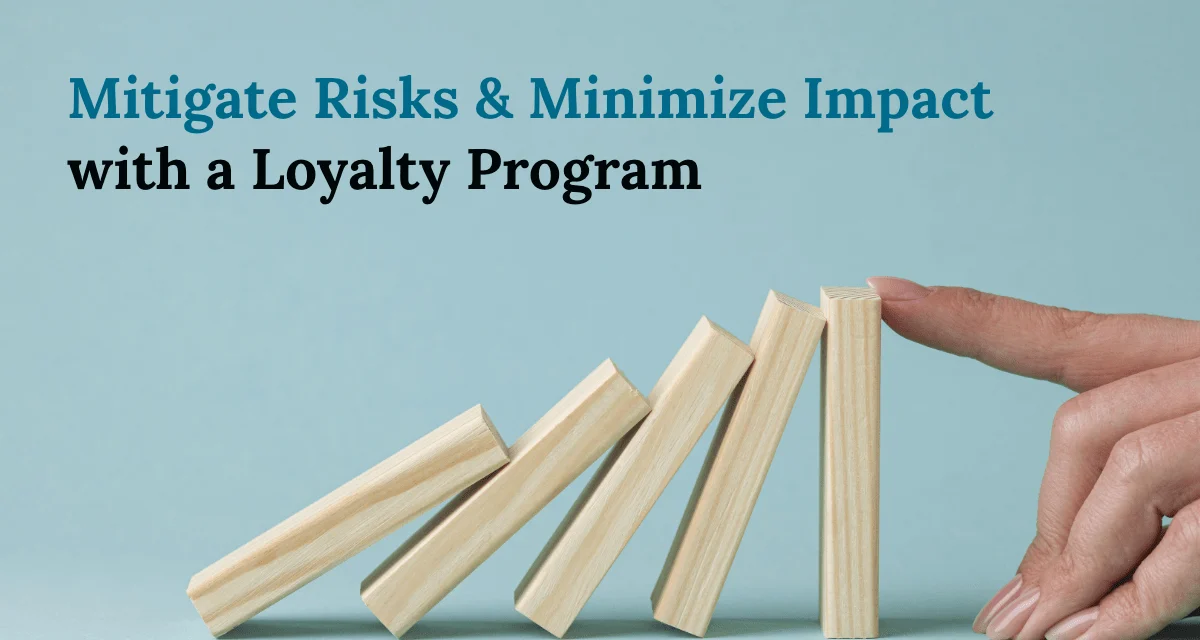Building customer loyalty is a continuous process irrespective of market volatility. Inflation rates have skyrocketed, pushing customers to think twice before purchasing. But, every economic downturn brings challenges and opportunities simultaneously. During the pandemic, an estimated $35 billion loss to the aviation industry had a negligible impact on American Airlines, the key reason was a loyalty program!
3 Risks of Loyalty Programs:
- Market Volatility
- Financial Risks
- Recession Impact
Brands tend to drift away from their loyalty initiatives influenced by market volatility. This shift impacts the results in the longer term. Starbucks and Amazon have been able to reap benefits by continuing investment in their loyalty initiatives.
- Starbucks
2008 was a testing year for every brand, whether growing enterprises or established brands. Starbucks launched an online portal called “My Starbucks Idea.” Customers could give their ideas, suggestions, or opinions regarding how Starbucks should treat their community. This opened a direct line of communication with customers. This customer-centric strategy helped Starbucks gain stable growth throughout the year. The success of this campaign helped Starbucks launch many campaigns in the coming years. Today, more than 50% of sales at are driven by Starbucks loyalty program.
Central idea – Stay close to customers and keep communication active with a loyalty program. Gathering customer data and analyzing it to move ahead during tough times is the best step forward. This keeps growth afloat and helps in customer retention.
- Amazon
Amazon launched its Prime membership in 2006. Amidst similar inflation forecasts during 2007 and early 2008, the brand did not alter any strategy to hold the membership program. Instead, it focused on enhancing the customer experience. It could have backfired when customers wanted to spend cautiously, but the user experience overcame the forecasts and resulted in steady growth. This strengthens the fact – the probability of selling to an existing customer is 60-70% more likely as opposed to 5-20% of a potential customer.
Central idea – The best way to mitigate the recession impact is to trust your loyal customers. Instead of exploring untested tactics, brands should focus on their loyal customer base with loyalty programs as a driver of customer relationships.
Not just for Starbucks but for numerous brands, the contribution of loyalty programs in gross revenue is nearly 50%. Customers prefer brands that deliver better experiences. To enhance user experience, a loyalty program helps brands to improve customer engagement while building meaningful relationships.
Mitigate Loyalty Programs Risks: Harness the Potential of Rewards Programs
Loyalty programs are not just for rewarding customers with discounts and cashback. Instead, loyalty programs gather customer data, deliver seamless customer experience, and empower brands to unlock multiple dimensions of loyalty. Historically, loyalty programs have proven their potential during hardships from the great depression of the 1930s to the economic slump of 2008.
The reason is straightforward – loyalty programs keep brands closer to the key drivers of the market – customers.
Strategically Shape a Loyalty Program into a Revenue Asset
Let’s understand some important elements that help build a loyalty program.
- Customer-centric approach: 72% of customers expect retailers to know who they are and what they purchased before. Devising strategies that are preferred by customers puts your brand as the first choice for customers. With rewards, cashback, and discounts, brands prove that customers are valuable to them and hence become their preferable option.
- Seamless customer experience: With a focus on post-purchase customer experience, brands can turn 89% of buyers into loyal customers through omni channel presence. Loyal customers expect brands to help them post-purchase and deliver unique buying experiences.
- Using data that matters effectively: Data helps brands understand customers and loyalty programs have proven to provide a rich pool of valuable data. A loyalty program helps brands put this data in use strategically.
Risks of Loyalty Programs: Conclusion
Loyalty programs act as an insurance against an economic downturn for brands. The end goal of customer loyalty programs is to inspire a positive emotional experience. Any brand with a deep connection with their customers has a better chance of keeping revenue growth afloat.The post-pandemic era reveals a higher growth rate for brands that matched customer expectations and kept running their loyalty programs. But without having a constant connection with customers, it will be tough to build sustainable revenue for brands.


